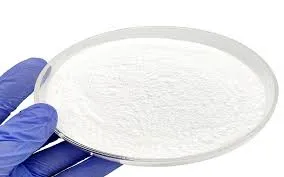

Environmental and Sustainable Alternatives With sustainability becoming a focal point in product development, the polymer industry is under pressure to adopt greener practices. Fillers such as natural fibers or recycled materials like fly ash and rice hulls offer eco-friendly alternatives, considerably reducing the environmental impact. These sustainable fillers are not only recyclable but also degrade more easily than conventional polymer composites. For companies committed to reducing their carbon footprint, these environmentally friendly fillers represent a strategic investment in sustainable development. Regulatory and Safety Considerations Navigating the regulatory landscape is crucial for any manufacturer, particularly when addressing fillers in polymers. Compliance with safety standards and environmental regulations is mandated across regions and industries. Thus, expertise in selecting fillers that meet these stringent requirements is vital. Fillers must not only enhance product performance but also adhere to international quality, safety, and health directives, including those dictated by the REACH regulation in Europe and equivalent standards globally. Innovation Through Advanced Fillers The relentless pursuit of better-performing polymer products has driven significant advancements in filler technologies. Cutting-edge fillers like nanosilica and carbon nanotubes have become game-changers by drastically elevating the properties of polymers. They enhance everything from electrical conductivity and thermal insulation to improved strength, even at microscopic levels. This innovation paves the way for the development of advanced materials used in high-tech applications such as electronics, defense, and renewable energy sectors. To maximize the advantages of fillers in polymers, manufacturers must collaborate with experts in polymer science and engineering. Utilizing their expertise ensures that the chosen fillers not only enhance performance but also align with specific application requirements and industry trends. For companies aiming to thrive in a competitive market, understanding and strategically employing fillers can be the key to unlocking new horizons in polymer product innovation. Polymer fillers represent more than just a means to an end; they are strategic tools that, when expertly leveraged, yield robust, cost-effective, and sustainable products poised for success in the modern landscape. Recognizing this is the first step towards leadership in a market increasingly driven by quality, efficiency, and environmental consciousness.
Next:

